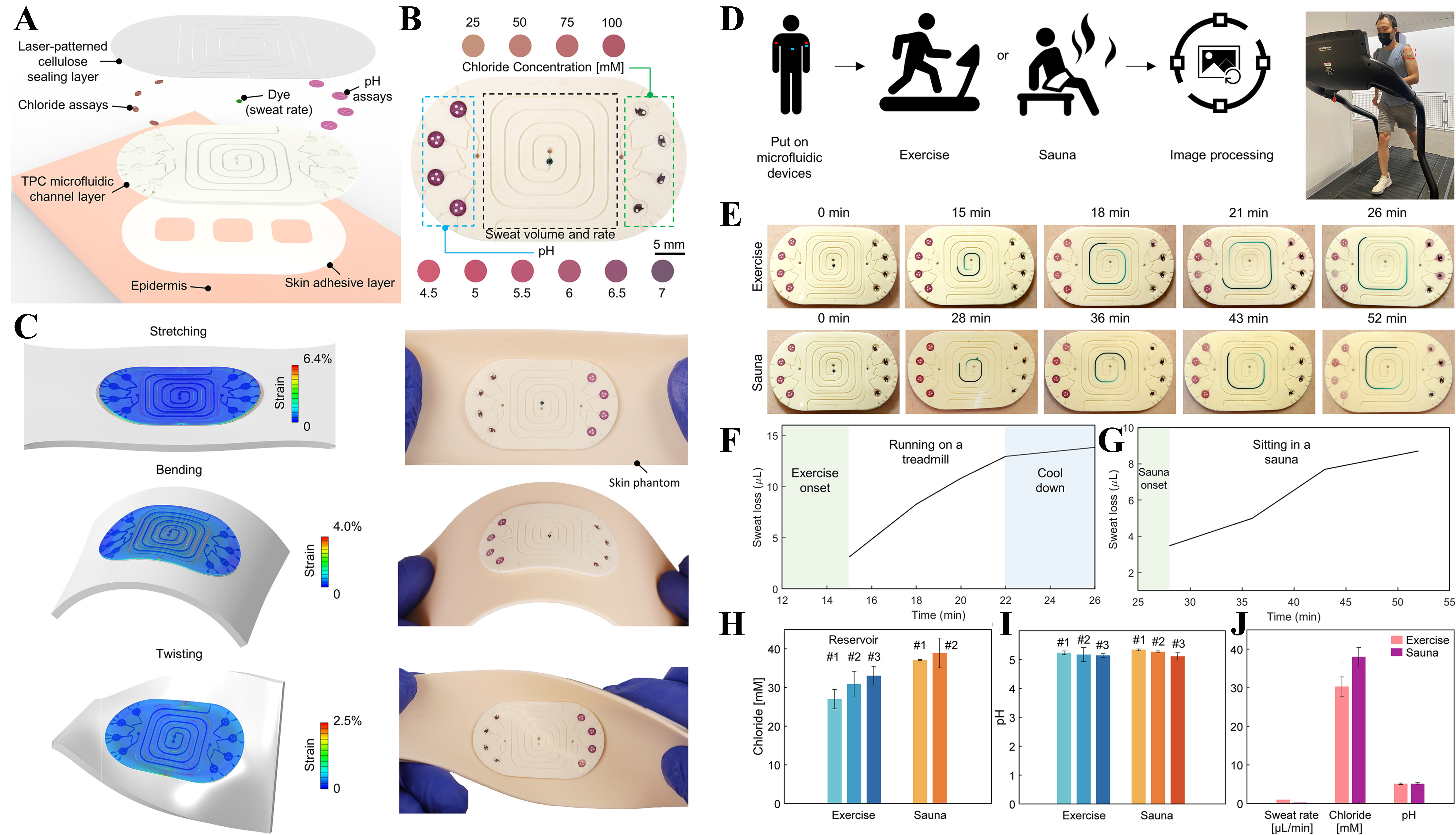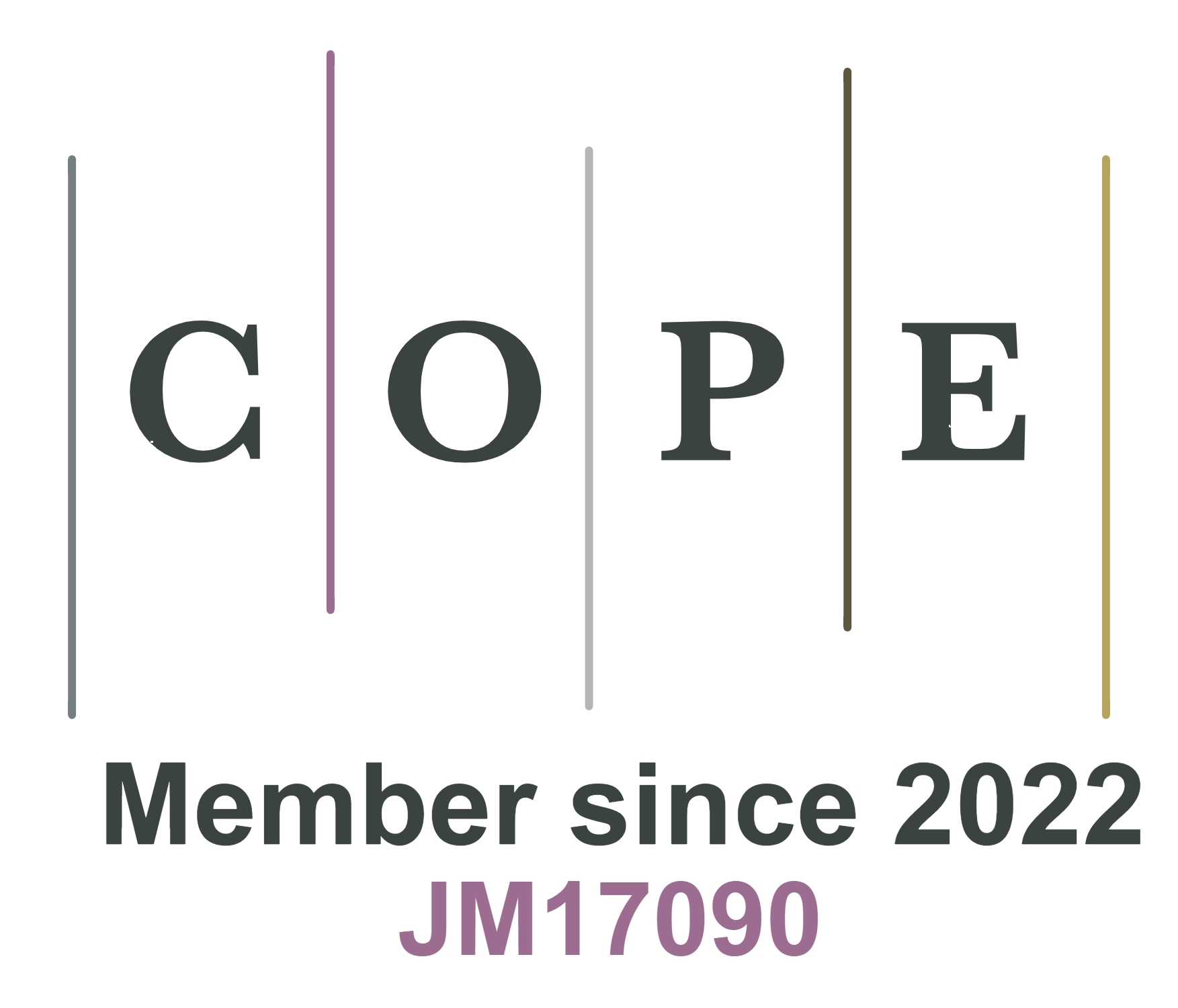fig5
Figure 5. Soft, biodegradable wearable microfluidic devices for sweat analysis under physical and thermal stimuli. (A) Exploded schematic showing the multilayer structure of the biodegradable sweat-sensing patch, comprising a laser-patterned cellulose sealing layer, colorimetric assay reservoirs for chloride and pH, and a TPC microfluidic layer bonded to a skin-adhesive layer; (B) Optical image of the device, highlighting sweat rate/volume channel and biomarker-specific reservoirs with visible colorimetric responses to varying chloride and pH levels; (C) Finite element simulations and corresponding images illustrating mechanical robustness under stretching, bending, and twisting deformations on a silicone skin phantom; (D) Workflow schematic for human trials involving exercise and sauna exposure, followed by digital image analysis; (E) Time-lapse images of the patch during treadmill exercise (first row) and sauna use (second row), respectively, from a human subject, showing progressive filling of microfluidic channels; Quantification of sweat chloride concentration and pH in different reservoirs during (F) exercise and (G) sauna exposure, showing consistent sensor performance; Concentration of (H) chloride and (I) pH value corresponding to each reservoir obtained by colorimetric image processing; (J) Comparative analysis of sweat rate (μL/min), chloride (mM), and pH across exercise and sauna trials. Reprinted from[88], Copyright © 2022 Liu et al. EcoMat published by The Hong Kong Polytechnic University and John Wiley & Sons Australia, Ltd. TPC: Thermoplastic copolyester.











